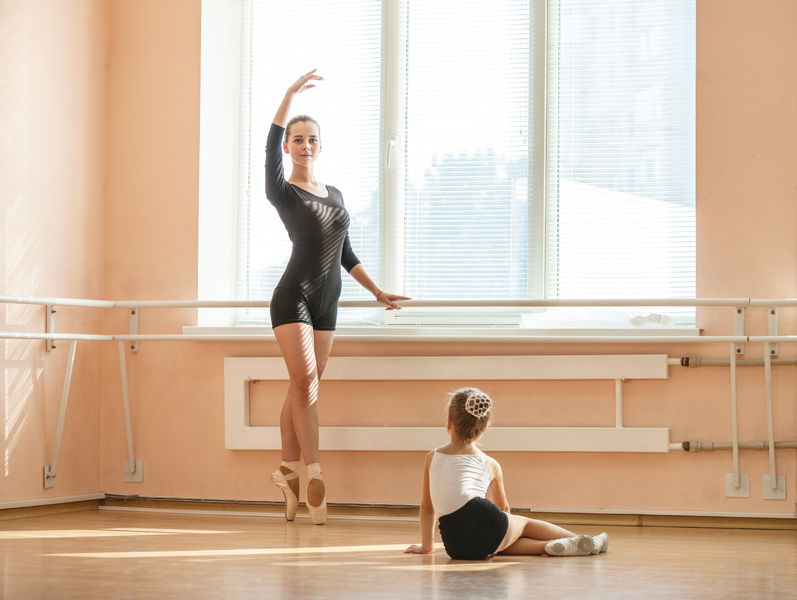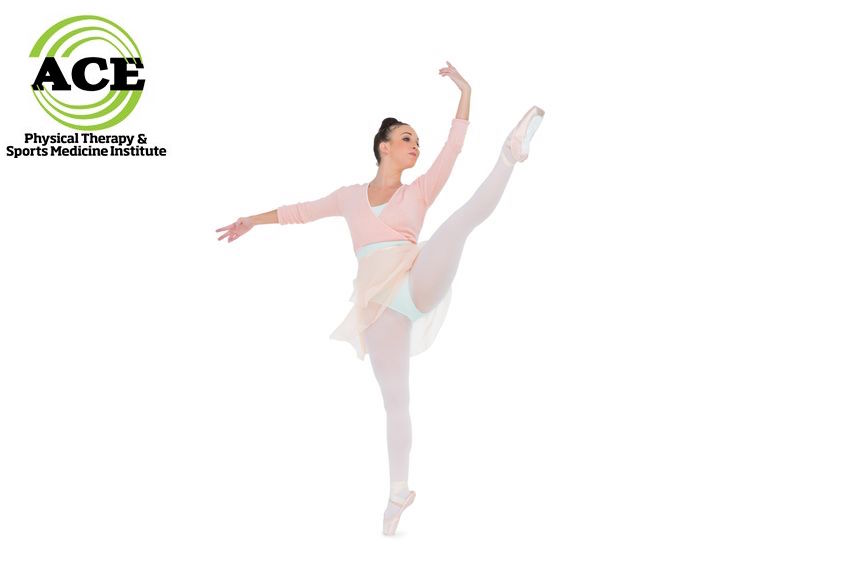BALLET’S POINTE AND PHYSICAL THERAPY

Tid Bits of Info
- Professional ballerinas can go through 2-3 pairs of ballet slippers per week.
- The energy required to perform a ballet is nearly equal to running 18 miles.
- BRT training utilizes low resistance and high repetitions.
- Pointe shoes are hand-made and the toe box is glued and baked in an oven to make it stiff.
- Approximately 80% of all ballet related injuries are in the dancer’s legs.
- If a ballet dancer gets injured, they should seek treatment from a Physical Therapist that specializes in orthopaedic and sports injury rehabilitation.
The dancer softly glides onto the stage like a swan floating on the calm water. Then in a moment, she rises to her toes, spins, and leaps into the air. The whole movement seems effortless and yet it is physically and mentally demanding. Ballet, rooted in fundamental movements of the human body, is precise, difficult, and can lead physical injuries. The audience may not grasp the intense physical nature of this dance, but the dancer knows that ballet requires muscular strength, physical stamina, and mental focus. Dancing on the toes or dancing “en pointe” is extremely difficult and places an unbelievable strain on the dancer’s ankles and feet.
The ankle and foot complex is made up of 26 bones and 33 different joints or articulating surfaces. When we weight-bear, the complex has to support all of our body weight for a period of time and the shapes of the bones and the intricate anatomical alignment provide the structural support to handle the task. There are numerous lower extremity conditions that have been linked to abnormal motion in the foot and ankle complex. While many conditions do not affect the complex itself, some do. When a ballet dancer rises into en pointe, the position of the bones in the complex are placed at a precarious position and can lead to many foot/ankle injuries.
The normal motions of plantar and dorsiflexion (motions that move the toes downward or upwards towards the shin bone) occur when the Talus glides and “rolls” within the mortise joint (the distal end of the Tibia and Fibula). There is an anatomical limit to the motion that most functional activities do not require the Talus to move to the limits. The en pointe position in ballet requires the talus to roll and glide to the end of its anatomical motion. When this excessive motion of the Talus occurs, the anterior capsule and soft tissues are stretched to their end limits. The heel bone or Calcaneus, the posterior portion of the Talus and Tibia come together and “lock” the ankle in the en pointe position. The articulating surface of the Talus nearly moves out of the mortise and the posterior Tibia rests on the non-articulating surface of the Talus. For the en pointe position to occur, the entire foot has to adjust and the movement in the mid tarsal joints and toes has to accommodate the excessive motion of the Talus in the mortise.
The ability to dance en pointe is not innate. The dancer must practice excessively and this can lead to many foot and ankle injuries. Healthcare professionals debate about the most appropriate age to begin the rigorous en pointe training. The push from parents, coaches, and dance instructors can lead to someone beginning too early when their skeletal development is immature and the joints and soft tissues are susceptible to injuries. The injuries can produce lifelong foot and ankle conditions that cannot be fixed. Waiting for skeletal maturity is a must, but due to the nature of the ballet environment, many young and immature children will begin to practice en pointe too early.
Foot and ankle injuries are the most frequently treated conditions of ballet dancers. Many of the injuries in early stages of a ballet dancer’s career are over-use soft tissue type injuries. The longer one dances the more severe the injuries can become. The position of the bones in the foot and ankle during the en pointe portion of a ballet dance can lead to arthritic changes in various parts of the dancer’s foot or ankle.
If ballet dancers get injured, they should seek treatment from Physical Therapists that specialize in sports, orthopaedic rehabilitation. Most of these healthcare professionals are not able to teach a ballet dancer how to perform the task, but they can help to treat the symptoms of injuries and design a strengthening program that will help to develop the musculature of the core and lower extremities. In most instances, many injuries occur due to decreased strength and muscular endurance throughout the musculoskeletal system.
Seeking advice and treatment from a Physical Therapist is easy and does not require a visit to your doctor. Your insurance policy might require a referral from your general practitioner but Physical Therapists are licensed healthcare professionals who can be first-line providers.
Ballet dancing is an art, science, and sport that is beautiful to watch. The dance and athletic skills need to perform the routines successfully require years of practice to perfect. Starting a young, immature dancer on certain skills can lead to many life-long problems. Prudent decision making from the dancer’s support team could help to prevent some of those problems from developing.

























